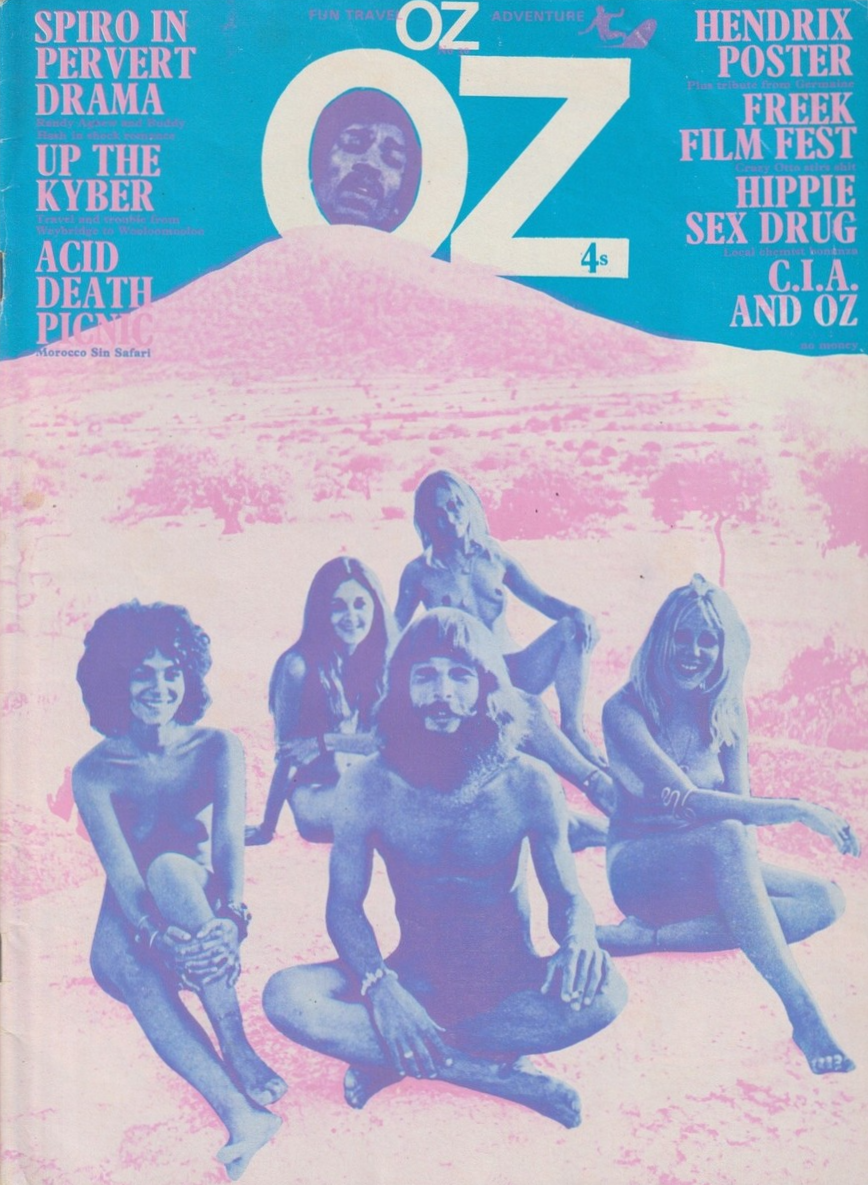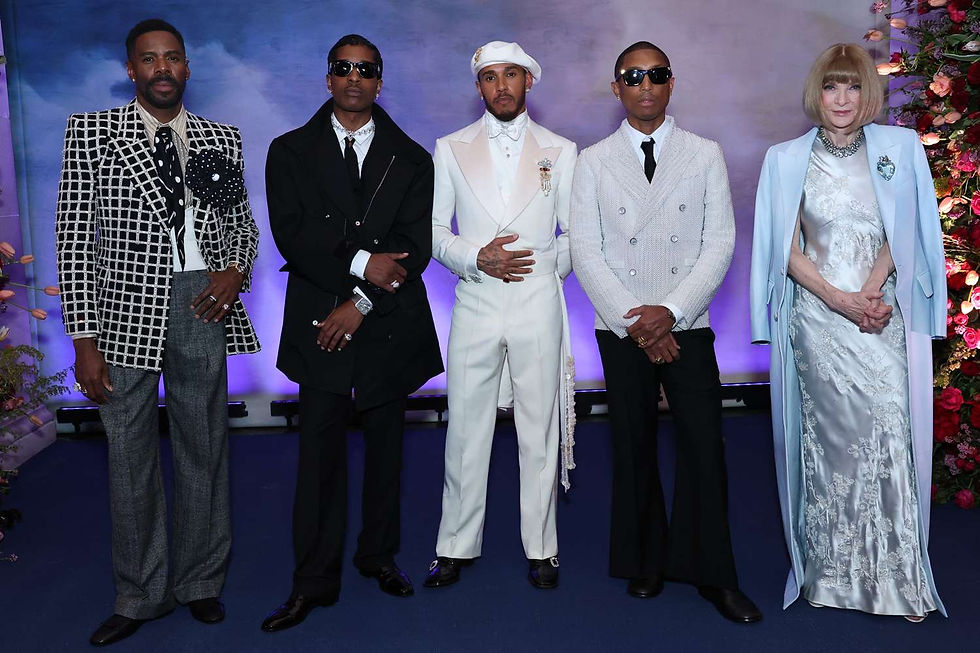VIVA to VOGUE: Anna Wintour’s Radical & Erotic Editorial Roots May Shock you!
- Penelope Dario
- Jul 29
- 5 min read
WORDS by PENELOPE DARIO
By now, the news of Anna Wintour’s shift away from daily duties at American Vogue is old news. But this announcement, along with the buzz around who may be next in line to lead the world's most influential fashion magazine has stirred up a lot of questions around legacy media keeping up with the modern landscape.
It's a popular opinion that Wintour’s conservative tilt may be out of step with the fast-paced modern era, but is Ms. Wintour really as tightly wound as we think she is? To truly predict where something or someone is going, we have to study where they came from. And our fair editor, in this case, has a much more colorful background than we give her credit for…

During a late-night Google dive, I stumbled upon a more comprehensive list of her employment history and discovered that she worked for not one but two risqué publications in her early years.
The first title that popped out was VIVA — a magazine for the sexually liberated, ambitious, and stylish woman published under Bob Guccione’s Penthouse umbrella. Debuting a few months after Playgirl, VIVA didn't just center male nudes for the female gaze; it blended erotic fiction, essays on social issues, and fashion editorials by the likes of Helmut Newton—enter Wintour's editorial touch.
Anna came on as a fashion editor in 1976 when the magazine was shifting slightly away from erotica as its cornerstone and aiming to elevate their content to compete with women’s luxury lifestyle magazines of the time. Unfortunately, this shift also alienated a quarter of their market: gay men, and ultimately folded in 1978—maybe brandishing “FOR WOMEN ONLY” on their February 1976 cover wasn’t the move.

Of course, I had to scour the internet to get my hands on back issues of this intriguing publication. 50 bucks for five copies in good condition? Sold! I eagerly awaited their arrival and was delightfully surprised at what I found at my door a week later: diverse and deep articles for the modern intellectual woman that comment on real issues and engage her erotic imagination in ways that feel authentic and, for the time, radical. I was thrilled to see fashion editorials featuring glamorous Black women, photo-journalism capturing trans nightlife, and articles critiquing the moral messages about sex workers in mainstream cinema. Flipping through these issues gave me that humbling feeling when you realize you didn't invent the wheel, and then a comforting sense of validation. I saw that there has always been a market for this kind of storytelling. Finding VIVA was like connecting to a long lost foremother in my magazine’s lineage.
But the fun didn't stop here!
Digging deeper into Anna Wintour’s editorial past, I uncovered another bold publication, Oz Magazine, which shares an uncanny thematic and visual resemblance with PETIT MORT’s current counterpart, Dirty Magazine. Naturally, I immediately texted Dirty’s publisher and EIC, Ripley Soprano, who responded with, “Oh yeah Oz is a huge inspo for Dirty, [our creative director] Maia pulls references from them all the time for our layouts.”

Oz was first released in Australia in 1963 by Richard Neville, Richard Walsh, and Martin Sharp. A fiercely satirical, counter‑establishment monthly print zine that blended humor, politics, and psychedelic art, Oz Magazine's irreverent tone and bold graphics quickly made it a flagship of the-down-under's underground press. In late 1966, Neville and Sharp relocated the operation to London where they could access a more radical readership, embrace full‑colour printing, and position Oz as the essential mouthpiece of the UK counterculture. At some point in the early days of its European inception, a fresh faced Anna Wintour was introduced to Neville by her father, Charles Wintour, a celebrated editor for the London Evening Standard at the time.

This was likely Anna’s first independent foray into the publishing world and it is said that she owes a lot of her early education in the rigor of this business from her time at Oz. It was surely a crash course in controversy too—during her relationship with Neville and tenure with the magazine, Oz faced the longest obscenity trial in British History. For nearly six weeks the publishers defended four counts of obscene publication and conspiracy to corrupt minors over a 15 year old girl’s drawing of a horny parody of the popular kids cartoon “Rupert Bear”.
To contextualize this, the issue in which the illustration was printed was guest edited by a group of secondary school students at a time when youth culture was booming like never before. Clearly, the Oz team knew how to mobilize a passionate audience, sparking protest marches across London attended by the likes of John Lennon and Yoko Ono. The pair even wrote a benefit single for the cause called “God Save Us.” And rumor has it, Anna Wintour offered Richard Neville her hand in marriage to save him from deportation! But despite the personal and cultural solidarity, all publishers were convicted and sentenced. Shortly into their terms, however, help came from Lord Chief Justice, LordWidgery (what a name!) as he overruled their case on the basis that their sentences were excessive and unsustainable.
Anna Wintour has been at Vogue longer than I have been alive. Ever since I’ve been aware of her omnipresence in an industry I dreamt of participating in, I’ve had her wrong. Whether by ignorance or by design, I was always under the impression that she was a well behaved, conservative woman from a good family who played by the rules and worked the social ladder to the top to secure a multi-decade career through an exacting political practice. And while the latter may yet be true, the former is not quite so clear.

I found myself becoming more and more endeared to her the more I learned about and related to her life story. Thinking of a bright eyed and bushy tailed little Wintour going over a layout for the first time at a magazine like Oz tickles my heart—I thought she was all Harpers & Queen, and Home & Garden before Vogue. When I imagine her at VIVA magazine in 1976, standing at the forefront of women’s liberation just two years after unmarried women were finally allowed to open credit cards, I see myself and everyone who has helped bring PETIT MORT to life in the wake of FOSTA/SESTA.
When I envision who may take the helm at American Vogue, I dream of someone who draws from this lineage and infuses it into the mainstream fold. Someone who can awaken the youth of today like Oz did and champion bodily autonomy like VIVA, on a larger scale than we currently have access to at Dirty and PETIT MORT. Because we know that culture, like fashion, is cyclical and the people are thirsty for a VOGUE that isn’t afraid to do what it takes to stay relevant, even if it means ruffling a feather or two.



